Rhipsalis Baccifera (Mistletoe Cactus) Care Guide
Written by Iris
Oct 20 2021
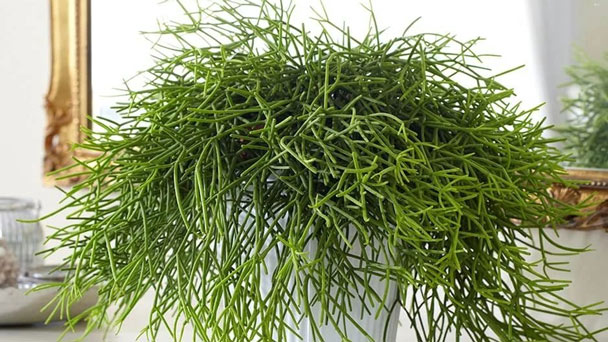
Rhipsalis Baccifera (also known as mistletoe cactus) is an elegant epiphytic succulent with long filamentous stems and many milky white flowers, followed by mistletoe like fruit. Like most cacti, it has succulent stems, but these Rhipsalis Baccifera stems are weak, slender, narrow, and drooping. Due to the presence of many geographically isolated populations, it exhibits considerable polymorphism and can be divided into many subspecies. Rhipsalis Baccifera is the most commonly cultivated species.
Rhipsalis Baccifera prefers a warm climate. rhipsalis baccifera can survive at zone 9b-11b which is around -3.9 °C (25 °F). If you live in a cold area, it is better to plant mistletoe cactus in an indoor environment. As long as it gets enough sunlight, the Rhipsalis Baccifera plant will grow happily.
When selecting what pot to use be sure that you understand the difference between the material used.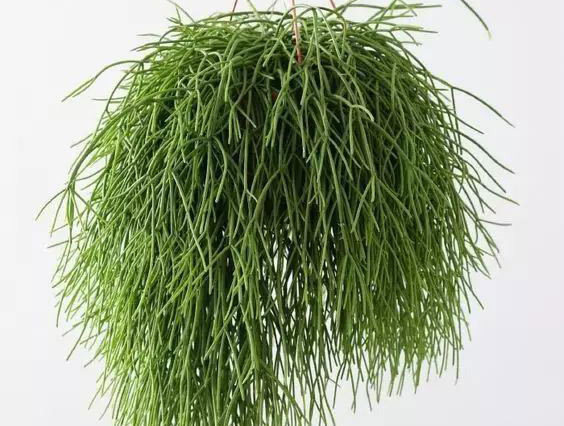
Select a pot with sufficient drainage and fill with cactus soil or another free draining compost.
Cut any part of a healthy stem from Rhipsalis Baccifera (or one with a dry end that you want to get rid of) and allow the end to dry for a few days before re potting it into your cactus soil. Once potted, keep the top of the soil a little damp with a mister and keep the Rhipsalis Baccifera (Mistletoe cactus) plant in a bright but indirect spot.
Rooting usually takes between 2-6 weeks but a gentle tug on the stem should help you to tell - if you feel resistance then the Rhipsalis Baccifera plant has a sufficient root base.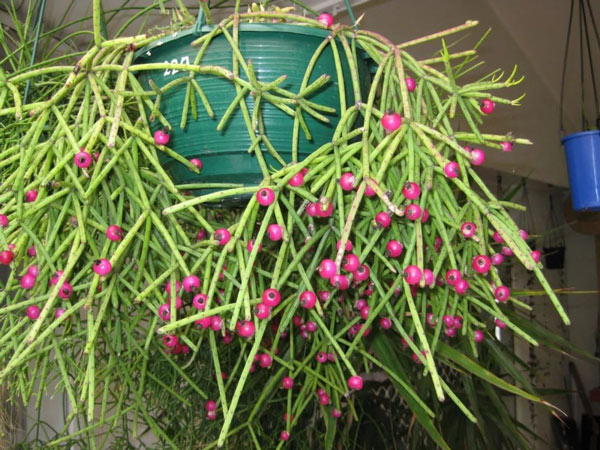
Rhipsalis Baccifera (Mistletoe cactus) does not thrive well in direct sunlight and the afternoon sun can burn the leaves of the plant and turn them yellow. When the leaves turn pale, it means that the Rhipsalis Baccifera plant is not getting enough sunlight. Rhipsalis Baccifera requires a lot of filtered bright light. Morning sun is the best lighting condition for the Rhipsalis Baccifera. Rotate your Rhipsalis Baccifera plant time to time to ensure even growth on all sides.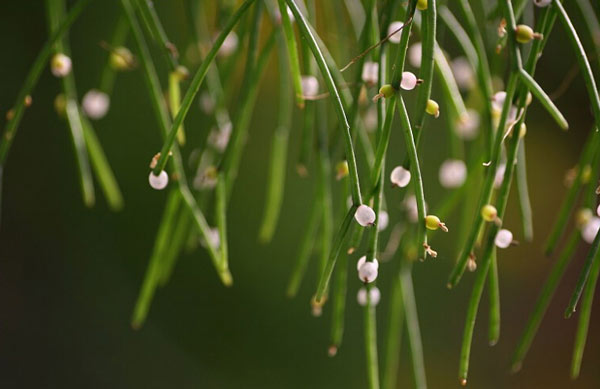
always remove old and dead shoots
cut off long and disturbing shoots
can be cut into the desired shape without any problems
slightly poisonous sap, better wear gloves when pruning
They appear as white blobs or raised brown scales on the plant. You should remove them with tweezers and swab the area with alcohol to prevent future infestation.
Other pests such as spider mites or red spider mites are difficult to identify as they will become evident after making their first attack.
Get rid of them, spray your Rhipsalis Baccifera plant with Neem insecticide or a mix of systemic pesticide.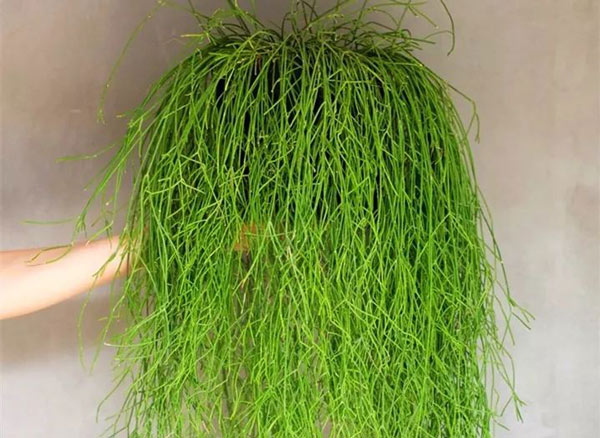
The most prominent genus is Rhipsalis, comprised of more than 40 species prized for their thin intertwining stems Most of these specie are obscure tropical cacti that exist only in the rainforest and are never found in domestic cultivation. But some common Rhispalis species often grown as houseplants include:
Rhipsalis Baccifera(mistletoe cactus or spaghetti cactus) is characterized by long thread-like stems and creamy-white flowers that give way to mistletoe-like fruits. This plant forms hanging clusters that are typically 3 feet long or greater when mature. This is by far the most commonly grown cacti in the genus.
Rhipsalis cereuscula (coral cactus) is a shrubby or bushy plant with branhes up to 2 feet long. Many long cylindrical stems emerge from the ends of long slender branches that form hanging clusters and flower with small, creamy-white blooms.
Rhipsalis clevata has a pendulous habit with many branches and white bell-shaped flowers. It makes a good hanging plant. (Find more best indoor hanging plants here.)
Rhipsalis pirocarpa is another tropical epiphytic from Brazil. It has long hairy cylindrical stems and fragrant white flowers about 3/4 in diameter. The shoots have reddish/purple edges, making this a very attractive species.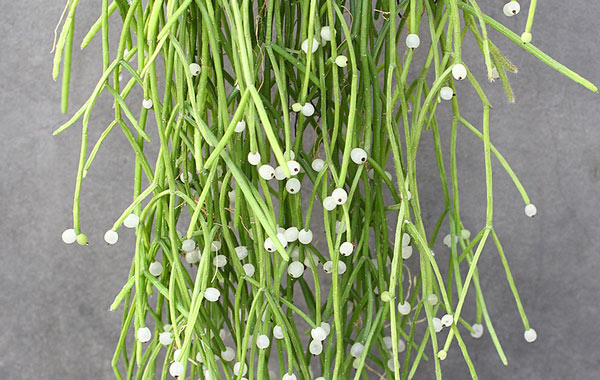
Where to Grow Rhipsalis BacciferaHow to Grow Rhipsalis Baccifera (Mistletoe cactus)Rhipsalis Baccifera Propagation with SeedsRhipsalis Baccifera Propagation with Stem CuttingsRhipsalis Baccifera (Mistletoe cactus) CareRhipsalis Baccifera Care - LightRhipsalis Baccifera Care - SoilRhipsalis Baccifera Care - WateringRhipsalis Baccifera Care - FertilizerRhipsalis Baccifera Care - Pruning Rhipsalis Baccifera Care - Pests & Diseases CareVarieties of RhipsalisRhipsalis Baccifera (Mistletoe cactus) FAQDoes Rhipsalis Baccifera flower?Are Rhipsalis Baccifera toxic to cats?
Where to Grow Rhipsalis Baccifera
Rhipsalis Baccifera (Mistletoe cactus) succulents need strong light. When planting rhipsalis Baccifera (Mistletoe cactus) in a garden, make sure it gets sunlight. Full to partial sun is the best for its growth. It is better to grow outdoor rather than indoor.Rhipsalis Baccifera prefers a warm climate. rhipsalis baccifera can survive at zone 9b-11b which is around -3.9 °C (25 °F). If you live in a cold area, it is better to plant mistletoe cactus in an indoor environment. As long as it gets enough sunlight, the Rhipsalis Baccifera plant will grow happily.
When selecting what pot to use be sure that you understand the difference between the material used.

How to Grow Rhipsalis Baccifera (Mistletoe cactus)
Rhipsalis Baccifera Propagation with Seeds
Rhipsalis Baccifera can also be propagated by collecting the tiny seeds from the fruits and replanting them, but this is a tricky, time-consuming process that is not really necessary, given the ease with which cuttings take root.Rhipsalis Baccifera Propagation with Stem Cuttings
Growing Rhipsalis Baccifera from seed can be very tricky so we would always recommend propagating by stem cutting.Select a pot with sufficient drainage and fill with cactus soil or another free draining compost.
Cut any part of a healthy stem from Rhipsalis Baccifera (or one with a dry end that you want to get rid of) and allow the end to dry for a few days before re potting it into your cactus soil. Once potted, keep the top of the soil a little damp with a mister and keep the Rhipsalis Baccifera (Mistletoe cactus) plant in a bright but indirect spot.
Rooting usually takes between 2-6 weeks but a gentle tug on the stem should help you to tell - if you feel resistance then the Rhipsalis Baccifera plant has a sufficient root base.

Rhipsalis Baccifera (Mistletoe cactus) Care
Rhipsalis Baccifera Care - Light
Rhipsalis Baccifera is an extremely hardy plant and the best location for your Rhipsalis Baccifera is at least a few feet from the window. Mistletoe cactus prefer bright and indirect sunlight, and they can also tolerate the morning and the evening sunlight.Rhipsalis Baccifera (Mistletoe cactus) does not thrive well in direct sunlight and the afternoon sun can burn the leaves of the plant and turn them yellow. When the leaves turn pale, it means that the Rhipsalis Baccifera plant is not getting enough sunlight. Rhipsalis Baccifera requires a lot of filtered bright light. Morning sun is the best lighting condition for the Rhipsalis Baccifera. Rotate your Rhipsalis Baccifera plant time to time to ensure even growth on all sides.
Rhipsalis Baccifera Care - Soil
Rhipsalis Baccifera needs to be planted in a well-drained soil. Mix one part perlite with one part potting soil, one part peat and one part coarse orchid bark, this soil mixture is excellent for the Rhipsalis Baccifera plant. The mixture provides structure, nutrition and drainage for the plant and this mixture can hold more moisture than a desert cactus mix. The Rhipsalis Baccifera plant can also do well in a standard potting mix blended with even parts of soil. The Rhipsalis Baccifera plant requires fresh potting soil every two or three years.Rhipsalis Baccifera Care - Watering
Depending on the light levels, Rhipsalis Baccifera like to be kept more on the drier side. If yours is in a bright, indirect location or in deep shade, allow the majority of the soil to dry in between waters. For those in direct light, only allow the top half to dry for the avoidance of dehydration. Under-watering symptoms include little to no new growth, a much-needed transplant and drying leaves. Over-watering symptoms, on the other hand, include yellowing leaves that soon drop off, little to no growth and root rot. These are common with too much soil moisture, an improper soil medium or deep shade. If the foliage directly above the soil line becomes brown and mushy, the chances are root rot has occurred.
Rhipsalis Baccifera Care - Fertilizer
When Rhipsalis Baccifera's flower buds begin to form, use a tomato-type fertilizer every two weeks through the flowering period and then monthly for the rest of the year, except for the rest period following flowering. Do not use a high nitrogen fertilizer on these plants or any other succulent.Rhipsalis Baccifera Care - Pruning
The broom Rhipsalis Baccifera does not need regular pruning for healthy growth, but pruning may prove necessary due to its long growth:always remove old and dead shoots
cut off long and disturbing shoots
can be cut into the desired shape without any problems
slightly poisonous sap, better wear gloves when pruning
Rhipsalis Baccifera Care - Pests & Diseases Care
Rhipsalis Baccifera (Mistletoe cactus) can experience a few pests. Mealybugs and scale insects are easy enough to get rid of and prevent.They appear as white blobs or raised brown scales on the plant. You should remove them with tweezers and swab the area with alcohol to prevent future infestation.
Other pests such as spider mites or red spider mites are difficult to identify as they will become evident after making their first attack.
Get rid of them, spray your Rhipsalis Baccifera plant with Neem insecticide or a mix of systemic pesticide.

Varieties of Rhipsalis
The four genera within the Rhipsalideae tribe are Hatiora, Lepismium, Rhipsalis, and Schlumbergera.The most prominent genus is Rhipsalis, comprised of more than 40 species prized for their thin intertwining stems Most of these specie are obscure tropical cacti that exist only in the rainforest and are never found in domestic cultivation. But some common Rhispalis species often grown as houseplants include:
Rhipsalis Baccifera(mistletoe cactus or spaghetti cactus) is characterized by long thread-like stems and creamy-white flowers that give way to mistletoe-like fruits. This plant forms hanging clusters that are typically 3 feet long or greater when mature. This is by far the most commonly grown cacti in the genus.
Rhipsalis cereuscula (coral cactus) is a shrubby or bushy plant with branhes up to 2 feet long. Many long cylindrical stems emerge from the ends of long slender branches that form hanging clusters and flower with small, creamy-white blooms.
Rhipsalis clevata has a pendulous habit with many branches and white bell-shaped flowers. It makes a good hanging plant. (Find more best indoor hanging plants here.)
Rhipsalis pirocarpa is another tropical epiphytic from Brazil. It has long hairy cylindrical stems and fragrant white flowers about 3/4 in diameter. The shoots have reddish/purple edges, making this a very attractive species.

Rhipsalis Baccifera (Mistletoe cactus) FAQ
Does Rhipsalis Baccifera flower?
In the wild Rhipsalis Baccifera (Mistletoe cactus) flower with many small white, yellow, orange or red flowers, which produce berries when fertilised. This rarely happens in the home. Rhipsalis' jungle background means that it's a houseplant with air-purifying properties according to research by NASA.Are Rhipsalis Baccifera toxic to cats?
Unfortunately, Rhipsalis Baccifera (Mistletoe cactus) contains insoluble calcium oxalates making them highly toxic to cats. Symptoms include burning of the lips and mouth, excessive drooling, oral swelling, and vomiting.Latest Updated
- Benefits of Bugleweed - 7 Science-backed Health Benefits
- Bugleweed Dangers & Side Effects - Is It Poisonous?
- How to Plant Evergreen Trees - What You Should Know
- When to Plant Evergreens - Grow Guide for Evergreen Trees
- 12 Wonderful Evergreen Shrubs for Your Garden
- 12 Popular Evergreen Plants with Pictures for Beginners
- When And How To Prune A Lilac Bush Like a Pro
- How to Grow & Care for Lilac Vine (Hardenbergia Violacea)
- Japanese Lilac Tree (Syringa Reticulata) Care & Propagation Guide
- Shumard Oak Pros and Cons - What to Know
Popular Articles
- Winter maintenance of Antirrhinum Majus
- How to Grow Terminalia Mantaly Tree
- How to Grow and Care for Crossostephium Chinense
- How to grow Antirrhinum Majus in spring
- Peristeria Elata (Dove Orchid) Profile: Info & Care Guide
- Underwatered Snake Plant (Sansevieria Trifasciata) - Signs And How To Fix
- How to Care for Brazilian Jasmine Plant (Mandevilla Sanderi)
- How to Grow & Care for Graptopetalum Purple Delight in Summer
- Rosa Chinensis (China Rose): Plant Growing & Care Tips
- How to Care for Baby Sun Rose (Aptenia Cordifolia)